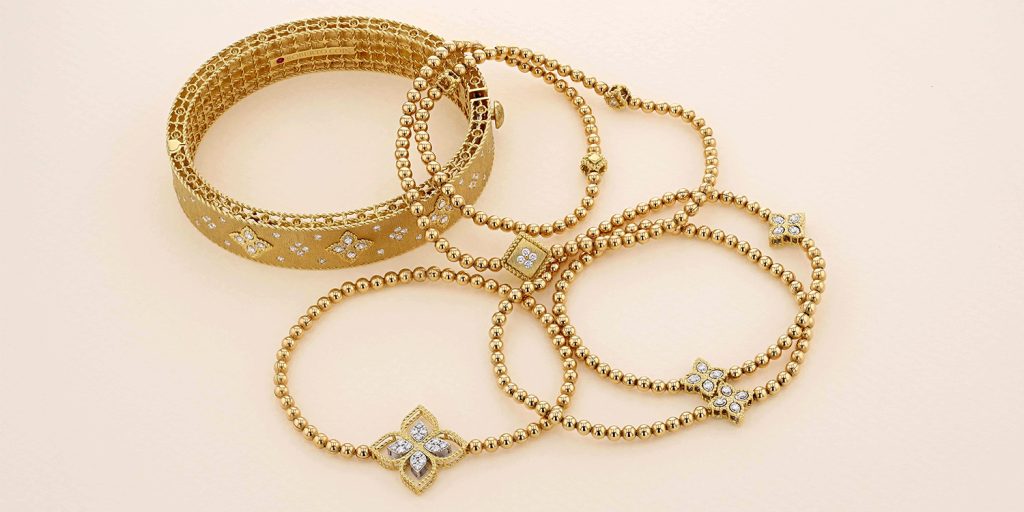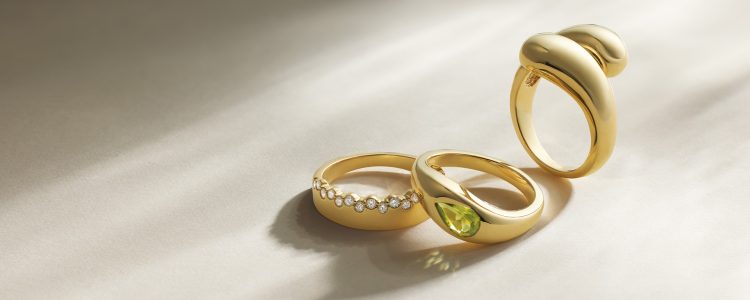Gold has long been a symbol of wealth, luxury, and status, and its use in jewelry has cemented its position as one of the most sought-after materials in the world. However, the relationship between jewelry trends and the price of gold is not one-sided. While the price of gold can impact jewelry design and sales, jewelry trends can also influence gold pricing. Understanding this dynamic is key for investors, collectors, and designers alike. In this article, we will examine the interplay between fashion and commodity pricing, explore how design innovations respond to market prices, analyze the economic factors of luxury pricing elasticity, and provide case studies on how major jewelry brands behave during price surges.
Interplay Between Fashion and Commodity Pricing
Jewelry, as both a luxury item and a form of investment, is uniquely positioned at the intersection of fashion trends and commodity pricing. The price of gold, as the primary raw material in most jewelry, plays a significant role in determining the cost of jewelry pieces. However, the fashion world also has a strong influence on gold prices, as trends in jewelry design and consumer demand can create upward or downward pressure on the gold market.
In periods of economic uncertainty or when gold prices rise sharply, jewelry brands and consumers often adjust their purchasing behavior. For example, when gold prices surge, consumers may shift toward purchasing smaller or less expensive pieces of jewelry or opt for alternative materials such as silver, platinum, or gemstones. Conversely, when gold prices fall, jewelry designers may take advantage of the lower cost of the metal to create larger, more intricate pieces, capitalizing on consumer confidence.
Fashion trends also dictate the popularity of certain jewelry styles, which can, in turn, influence the demand for specific types of gold. For instance, the rise of minimalist jewelry has led to a demand for smaller, more delicate gold pieces, while bold, statement-making designs have spurred interest in larger gold jewelry. As jewelry designers react to these trends, the demand for gold in specific forms and weights changes, influencing the overall price of the metal.
How Design Innovations Respond to Market Prices
Jewelry design innovations often respond to fluctuations in the gold market, adapting to changing conditions in the commodity market. When gold prices rise, designers and manufacturers may look for ways to maintain the attractiveness of their pieces without passing on the full cost to consumers. This often leads to the creation of more innovative designs that use less gold while maintaining the perceived value of the jewelry.
One approach is the use of mixed metals, where gold is combined with other materials such as silver, platinum, or palladium to create visually appealing pieces at a lower cost. For example, during periods of high gold prices, designers may use a higher percentage of silver in their pieces while keeping the gold accents, allowing them to maintain the look of luxury without the inflated costs. This strategy enables jewelers to offer attractive pieces while responding to rising production costs.
Additionally, jewelry designers often innovate in terms of style and craftsmanship. For example, the rise of intricate, detailed designs in recent years may be partly driven by the higher cost of gold, as consumers seek out high-quality, intricate pieces to justify the cost. Designers are also incorporating gemstones, diamonds, and other precious materials into their designs to create a luxurious appeal while mitigating the impact of rising gold prices.
The advent of technology in jewelry design, such as 3D printing, has also allowed for more precise and cost-efficient manufacturing methods. These innovations help jewelry companies reduce production costs and pass savings on to consumers while still offering high-quality, on-trend designs.
Economic Analysis of Luxury Pricing Elasticity
The concept of luxury pricing elasticity is crucial when examining how gold jewelry responds to changes in gold prices. In economics, price elasticity refers to the degree to which the demand for a product changes in response to a price change. In the case of gold jewelry, this concept can help explain why some pieces are less sensitive to price fluctuations than others.
Luxury goods, including high-end gold jewelry, tend to have lower price elasticity compared to more common products. This means that even as gold prices increase, the demand for luxury jewelry may not decrease proportionally. Consumers of luxury jewelry are often less sensitive to price increases because they are purchasing the product for reasons beyond mere function or investment—they are buying a symbol of wealth, status, or emotional value.

For example, high-end jewelry brands such as Cartier, Tiffany, and Bulgari may see little to no decrease in demand during periods of rising gold prices because their products are considered status symbols. Consumers of luxury goods may prioritize the brand’s reputation, exclusivity, and craftsmanship over the price of the raw materials used in the jewelry. Therefore, when gold prices rise, these brands can often pass the higher costs on to consumers without significantly affecting demand.
On the other hand, lower-end or mass-market jewelry may be more sensitive to price changes. When gold prices increase, consumers may choose to buy smaller pieces, opt for cheaper metals, or even delay purchases altogether. This is particularly true in markets where gold jewelry is seen as an investment or where consumers are more price-conscious.
Case Studies on Brand Behavior During Price Surges
To better understand how jewelry trends and gold prices interact, let’s look at some case studies of how prominent jewelry brands have responded to gold price surges in the past.
Case Study 1: Tiffany & Co.
Tiffany & Co., one of the most well-known luxury jewelry brands, provides an excellent example of how a high-end brand responds to gold price fluctuations. In the years following the global financial crisis of 2008, gold prices saw significant increases. Tiffany, known for its high-end gold jewelry, continued to see demand for its iconic pieces such as the Tiffany Setting engagement rings and their signature gold bangles. During this time, the company focused on emphasizing the craftsmanship and rarity of their pieces, downplaying the impact of rising gold prices on the cost of their products.
While Tiffany raised prices in response to higher gold costs, they were able to retain their customer base, largely due to their brand’s strong identity and the inherent value placed on owning a piece of Tiffany jewelry. The company’s ability to pass on price increases without losing demand highlights the inelastic nature of luxury goods pricing.
Case Study 2: Pandora
Pandora, a popular jewelry brand known for its charm bracelets, provides an example of a mass-market brand’s response to gold price surges. In 2011, as gold prices hit record highs, Pandora faced pressure from rising material costs. Unlike Tiffany, which has a loyal high-end customer base, Pandora caters to a more price-sensitive audience. To mitigate the impact of rising gold prices, Pandora diversified its offerings by incorporating more silver and less gold into their designs, allowing them to maintain price points that appealed to their core customer base.
Pandora also introduced new product lines that included alternative materials such as leather and mixed metals, catering to the growing trend of customizable and more affordable jewelry options. This ability to adapt and shift materials allowed Pandora to continue growing during a period of rising gold prices, highlighting the importance of flexibility in responding to market conditions.
Conclusion
The relationship between jewelry trends and gold prices is complex and multifaceted. While gold prices certainly influence jewelry design and pricing, trends in fashion, consumer preferences, and brand behavior also play a significant role in shaping the jewelry market. Jewelry designers and manufacturers often adapt their designs, materials, and pricing strategies in response to fluctuations in gold prices, and brands that offer luxury goods can typically pass on higher costs without sacrificing demand.
Understanding the interplay between jewelry trends and gold prices is essential for both investors and consumers alike. By staying informed about market conditions and recognizing how design innovations and economic factors influence the jewelry market, investors can make better decisions about whether to invest in gold jewelry, bullion, or other assets.
































